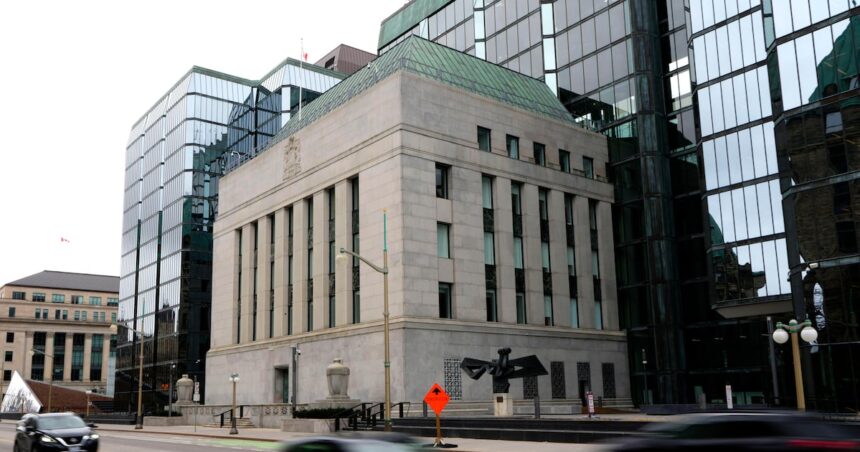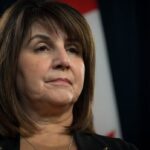The Canadian economy stands at a precarious crossroads as leading economists and financial institutions sound alarms about potential economic contraction in 2025. Behind the gleaming storefronts and bustling city centers, warning signs are emerging that suggest Canada’s economic resilience may face its most significant test in recent years.
“We’re seeing a confluence of concerning indicators that point toward a possible recession by mid-2025,” explains Dr. Amrita Singh, Chief Economist at Toronto Financial Group. “The combination of persistent inflation pressures, rising interest rates, and declining consumer spending power creates a perfect storm scenario that Canadian policymakers need to address urgently.”
Recent data from Statistics Canada reveals troubling trends beneath surface-level economic stability. Consumer spending, which accounts for approximately 60% of Canada’s GDP, has shown steady decline over three consecutive quarters. Retail sales volumes decreased by 2.3% year-over-year, while household debt servicing costs have reached their highest levels since 2007.
The Bank of Canada’s aggressive interest rate policy, while necessary to combat inflation, has created significant headwinds for homeowners and businesses alike. With the average Canadian household now allocating nearly 15% of disposable income to debt payments, discretionary spending has contracted dramatically across multiple sectors.
“What we’re witnessing isn’t simply an economic slowdown – it’s potentially the early stages of a recession cycle,” warns Michael Rodriguez, senior economist at CO24 Business. “The housing market correction alone has wiped out over $300 billion in household wealth since its peak, and we’re seeing that impact ripple through consumer confidence metrics.”
International factors compound these domestic challenges. Canada’s export-dependent economy faces significant pressure from global trade tensions and weakening demand from key trading partners. The United States, destination for approximately 75% of Canadian exports, shows its own signs of economic fragility with manufacturing contraction and declining business investment.
The resource sector, long a pillar of Canadian economic stability, faces its own challenges. Energy producers confront not only price volatility but also transition pressures as global markets accelerate toward renewable alternatives. This structural shift creates additional uncertainty for provinces heavily dependent on resource revenues.
“We’re particularly concerned about the labor market outlook for 2025,” notes Jennifer Park, labor economist and researcher at the Canadian Centre for Policy Alternatives. “While unemployment remains relatively low at 5.8%, we’re seeing troubling increases in long-term unemployment and underemployment statistics. Job quality has deteriorated significantly, with more Canadians working multiple jobs to maintain living standards.”
Financial markets have begun pricing in recession risks, with the TSX composite showing increased volatility and defensive sectors outperforming growth-oriented investments. Bond markets reveal an inverted yield curve – historically a reliable recession predictor – with short-term government securities yielding more than long-term bonds for over four months.
Provincial governments face challenging fiscal positions should a recession materialize. After pandemic-era spending increases and support programs, many provinces carry historically high debt loads with limited capacity for additional stimulus. Ontario and British Columbia, Canada’s most populous provinces, have already announced spending reviews and possible program reductions in anticipation of revenue shortfalls.
Not all economists share this pessimistic outlook, however. “While risks certainly exist, Canada’s economic fundamentals remain relatively sound,” argues Thomas Wilson, senior economist at RBC Capital Markets. “Our banking system maintains strong capital positions, immigration continues supporting population growth and consumption, and commodity prices provide some buffer against external shocks.”
The Bank of Canada faces perhaps its most challenging policy environment in decades. Further interest rate increases risk deepening economic contraction, while premature cuts could reignite inflation that has proven stubbornly persistent. This delicate balancing act leaves minimal room for policy error.
“Canadians should prepare for economic turbulence through 2025,” advises financial planner Sophia Chen. “This means building emergency savings, reducing high-interest debt, and ensuring investment portfolios are properly diversified. Recession-resistant sectors like healthcare, utilities, and consumer staples typically outperform during downturns.”
For Canadian politics, the economic forecast creates significant challenges ahead of potential federal elections. Governing parties historically fare poorly during periods of economic contraction, placing additional pressure on fiscal policy decisions throughout 2024.
As world news continues highlighting global economic uncertainty, Canadians face important questions about their economic future: Can policymakers engineer the elusive “soft landing,” or will aggressive inflation fighting tip the economy into recession? More importantly, how can Canada build greater economic resilience to weather future storms in an increasingly unpredictable global landscape?










